When modeling role-based apps, also note the general information on page Role-based Authorization Concept.
Using the Role Wizard
A wizard supports you in using roles: It helps to create new roles or to reuse already existing roles. The role wizard opens as soon as you drag the role element from the sidebar to the work area:
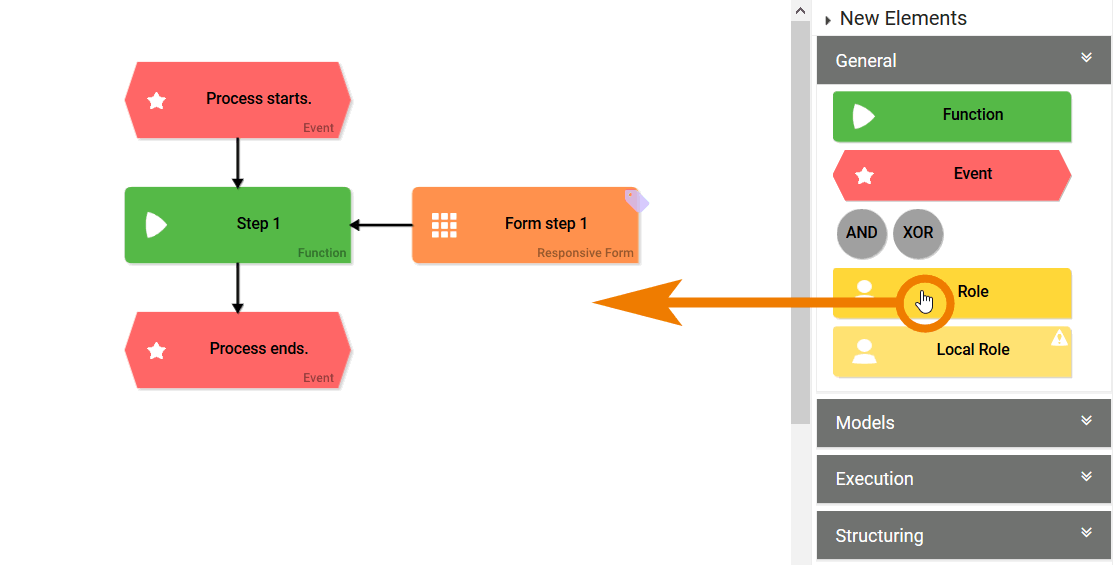
In the wizard, you can choose between two options:
-
Select role
-
Create a new role
When you open the wizard for the first time, the list of existing roles is still empty. Choose Create a new role to create a first role:
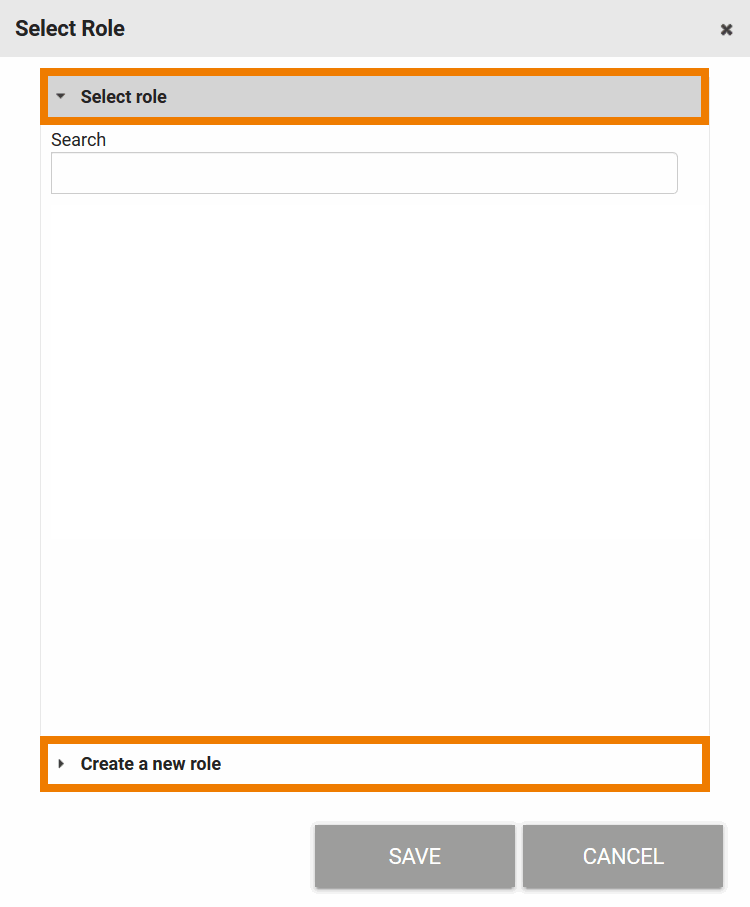
In the Name field, enter a name for the role:
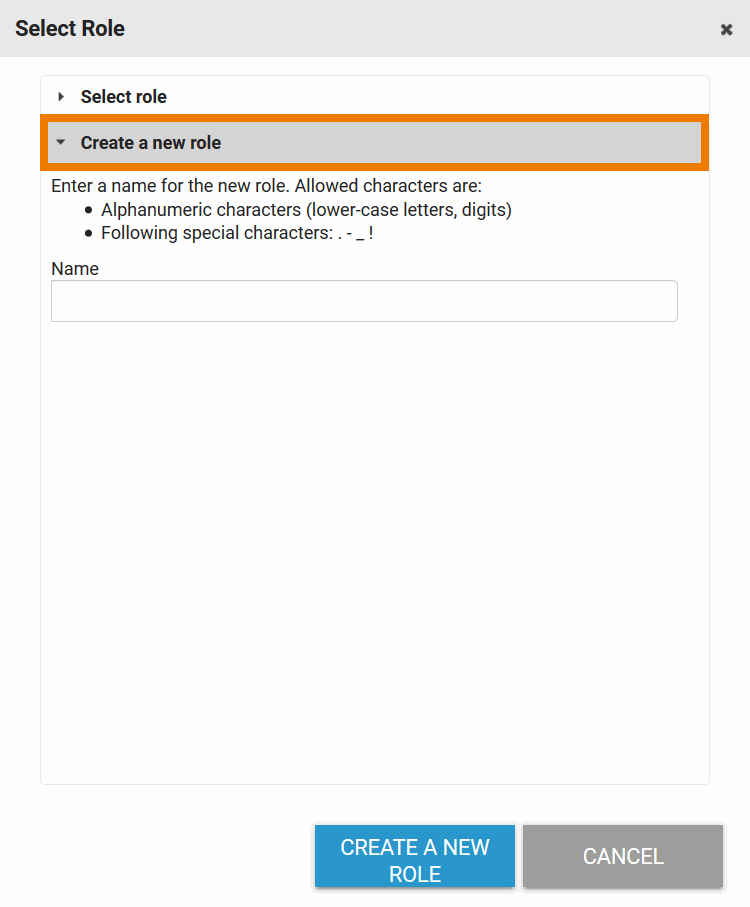
The role's name is a technical identifier which has to be unique. Therefore, it may only contain lowercase letters and digits as well as the permitted special characters dot ( . ), minus ( - ), underscore ( _ ) and exclamation mark ( ! ).
If the chosen name is already in use, a warning will appear in the BPaaS Editor:

The new role is created as an EPC element on the work area:
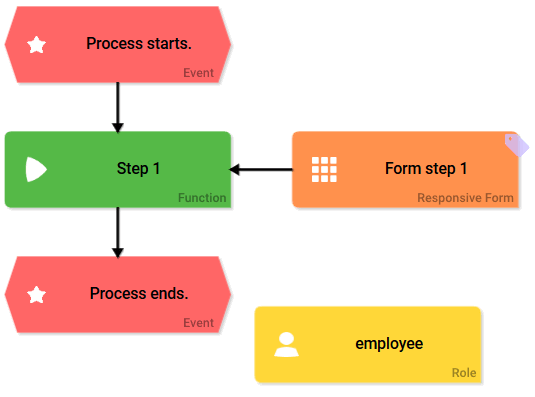
The role is also created in the Scheer PAS Administration. Here the corresponding users can be assigned to the role:
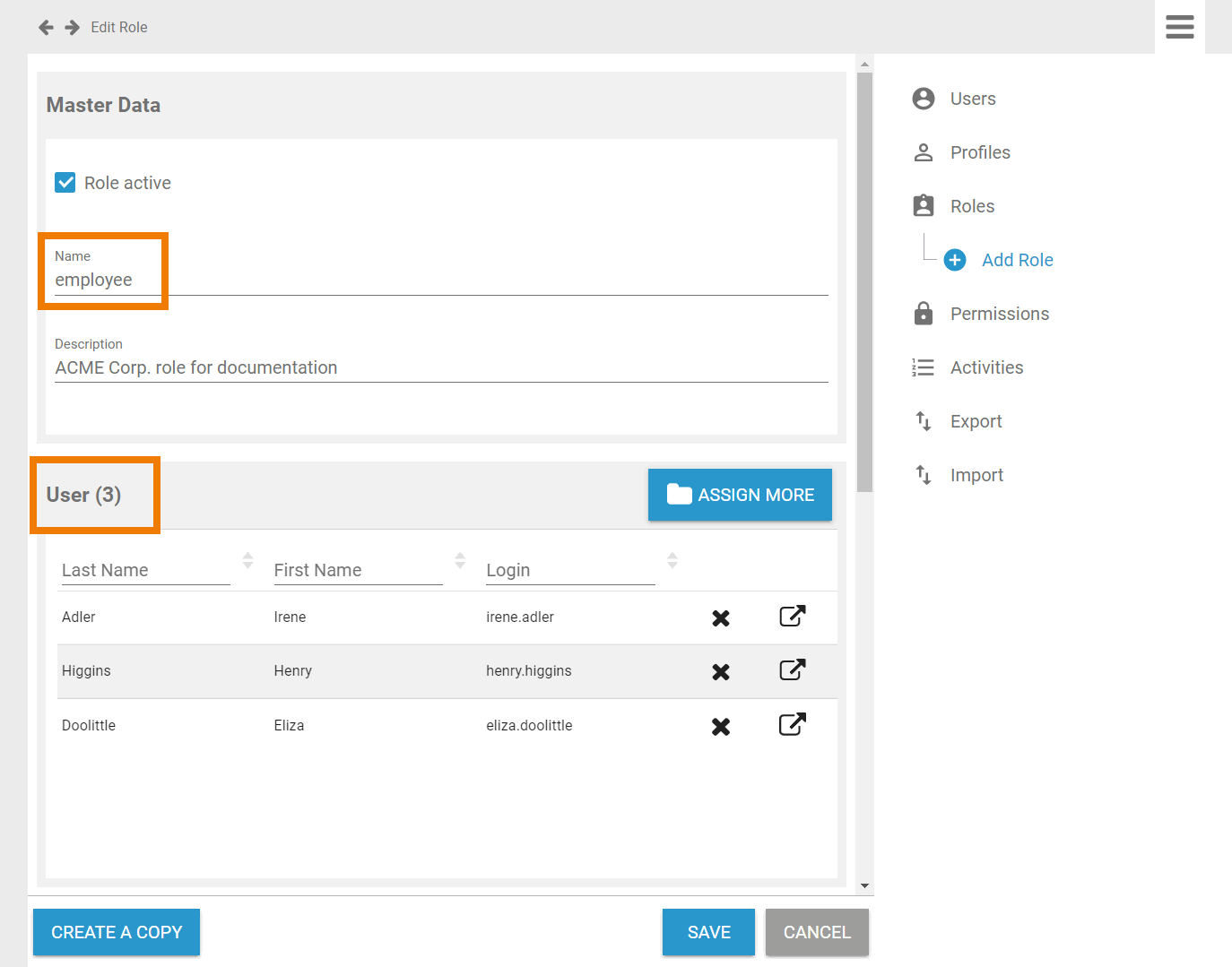
The user-role assignment is explained in detail in Administrating BPaaS.
In the administration, administrators can also insert translations for the technical identifier of the role to change the display name:
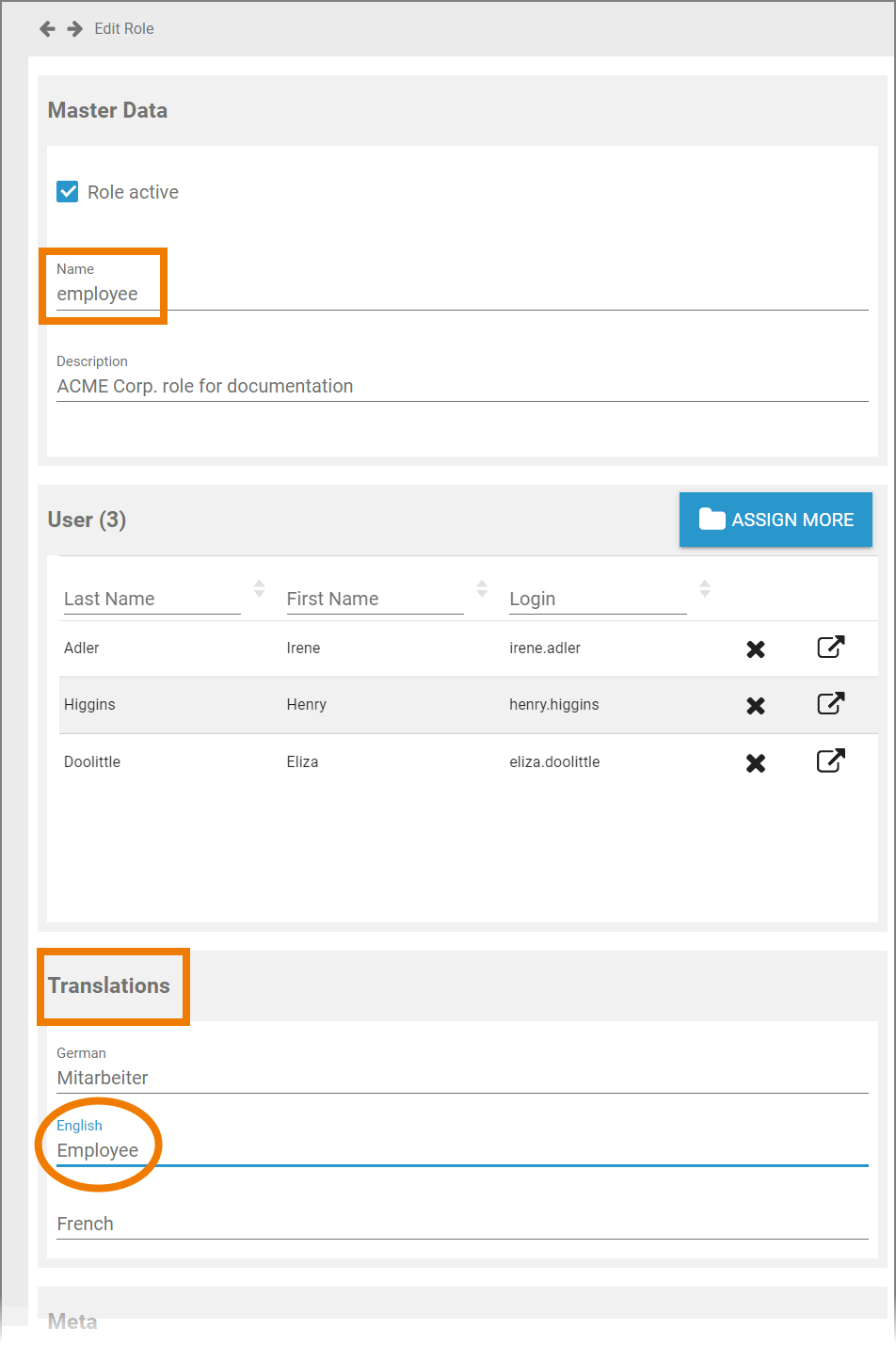
In the BPaaS Editor, the element is then displayed with the translation instead of the technical identifier:

Once a role has been created, it can be reused at any time. If you open the wizard the next time, the role appears in list Select role. The list can be searched for keywords using the search bar:
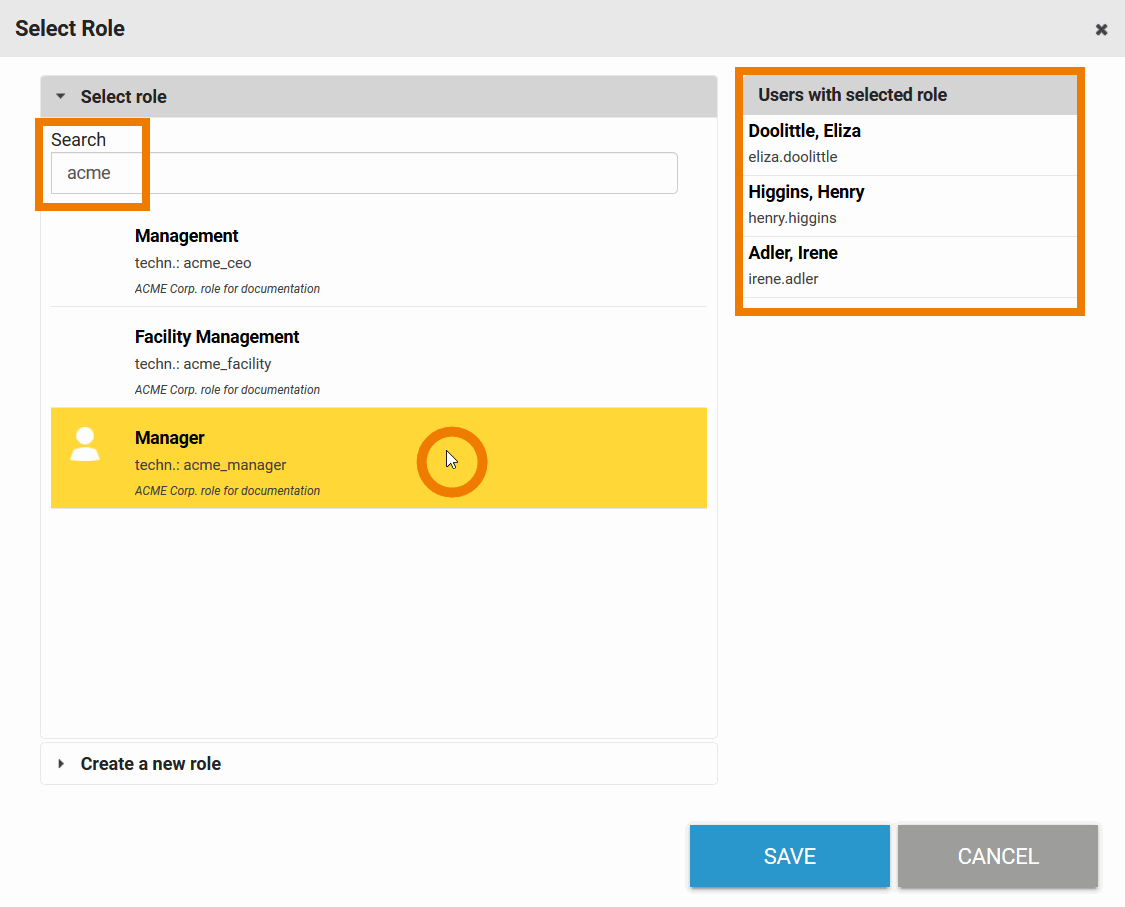
Click on the role you want to reuse. If in the administration users have already been assigned to the role, they are displayed on the right in the list Users with selected role.
Expert Advice
Before you create your first business processes as EPCs, first model an organizational chart of your company:
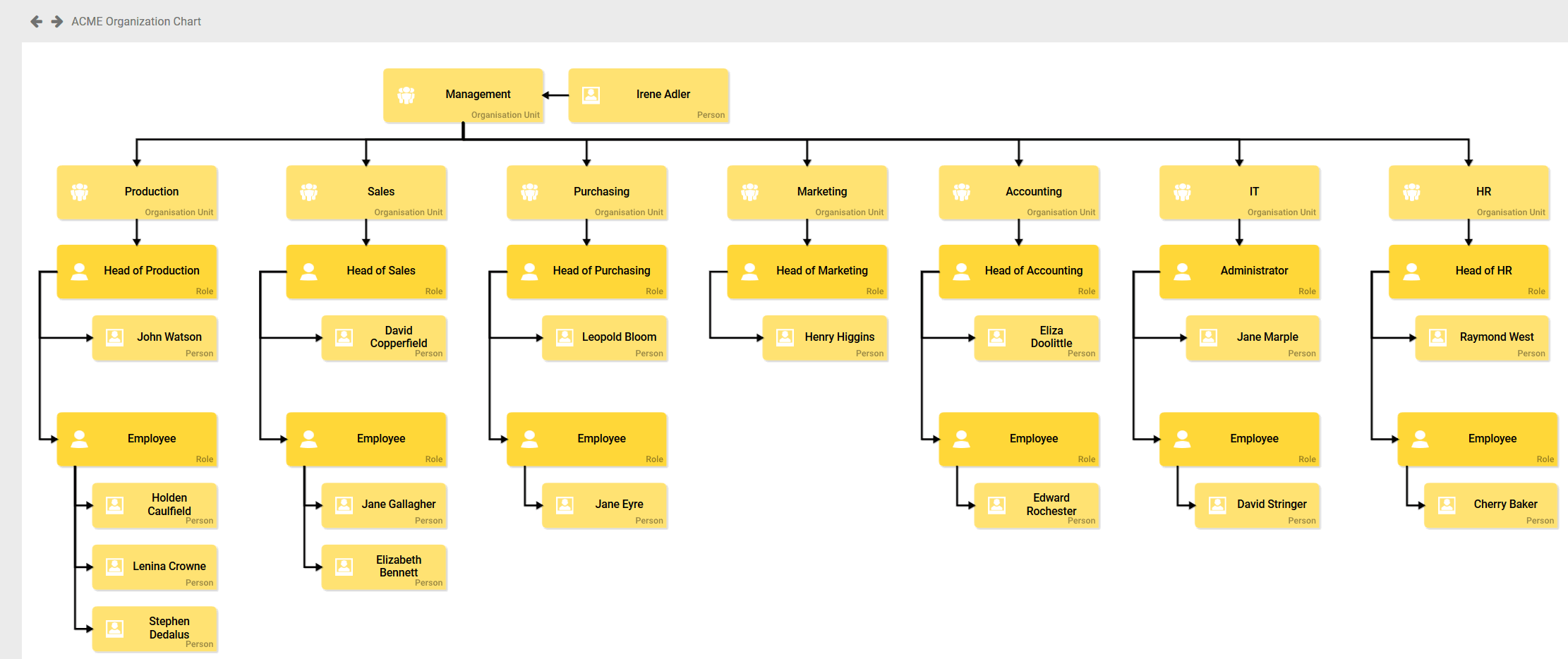
You can then directly reuse the roles from the organizational chart when modeling your business processes:
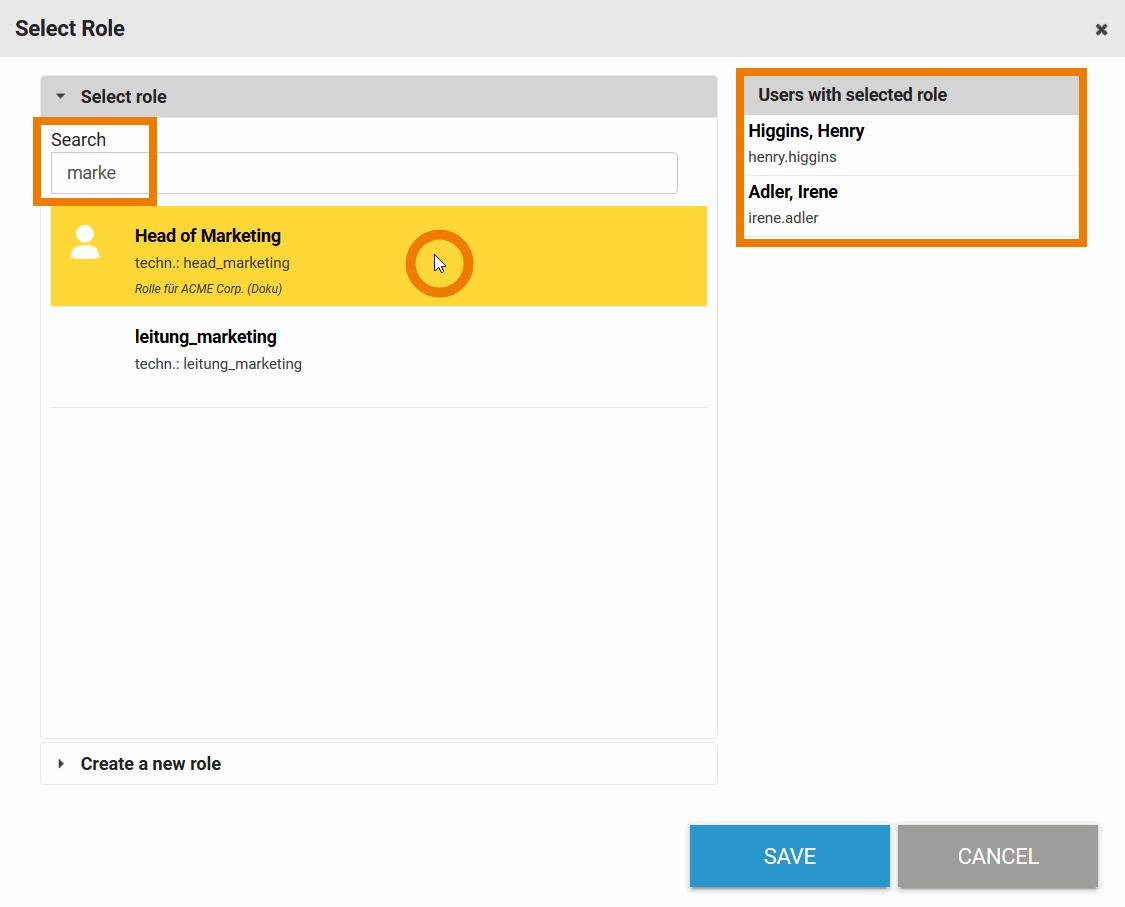
Important Note for Transporting Apps with Roles
Roles are managed centrally in the administration. When transporting role-based models from one system to another (for example, from a test system to a production system), you must ensure that the roles are also imported to the relevant administration. Further information on this topic can be found on page Reusing Central Roles.
